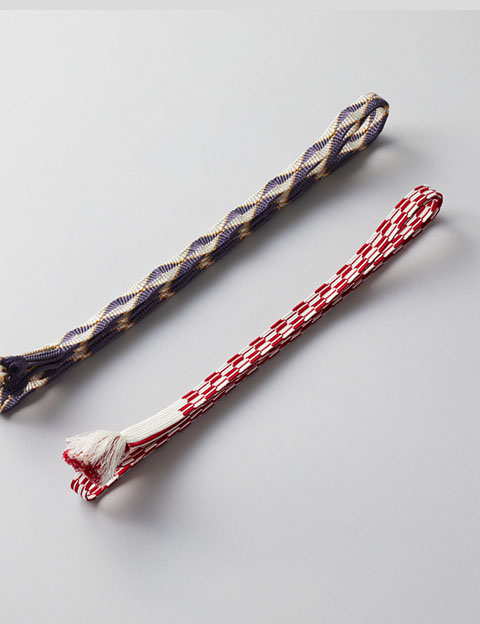KYO Kumihimo (Braiding)

Both twisted cord and simple braided cord were used in everyday life during the Jomon era (ca. 10,000–300 B.C). Kyoto braided cord is reported to have appeared in the Heian era (794–1185) but techniques for making practical braided cord developed in the Kamakura era (1185–1333) as the use of armor increased. Production of cord for haori, formal short kimono jackets, started in the Edo era (1600–1868).
This cord has been used for more than a thousand years and has been utilized in every conceivable way at temples and shrines, on clothes, helmets and sword knots. The method of braiding depends upon the item’s final purpose, but there are over 3,500 variations. Since the Meiji era (1868-1926), it has been used to tie obi sashes and other accessories.
Feature
Kyoto Kumihimo has been utilized for more than a thousand years in many different ways, including at shrines and temples, as well as for clothes, armor, sword straps, and more. Braiding methods vary according to the intended use and about 3,500 different ones have been counted. Since the Meiji era they have been used for sash band for kimonos called obijime.
How to make
The process for making Kyo kumihimo includes preparatory stages such as dividing, twistering (thread-combining) and measuring, as well as other stage like assembling, tufting, steaming, etc. In the course of the important assembling stage, cords are assembled by hand using round looms (marudai), square looms (kakudai), high looms (takadai), kagouchi looms, ayatakedai looms and naikidai looms.

